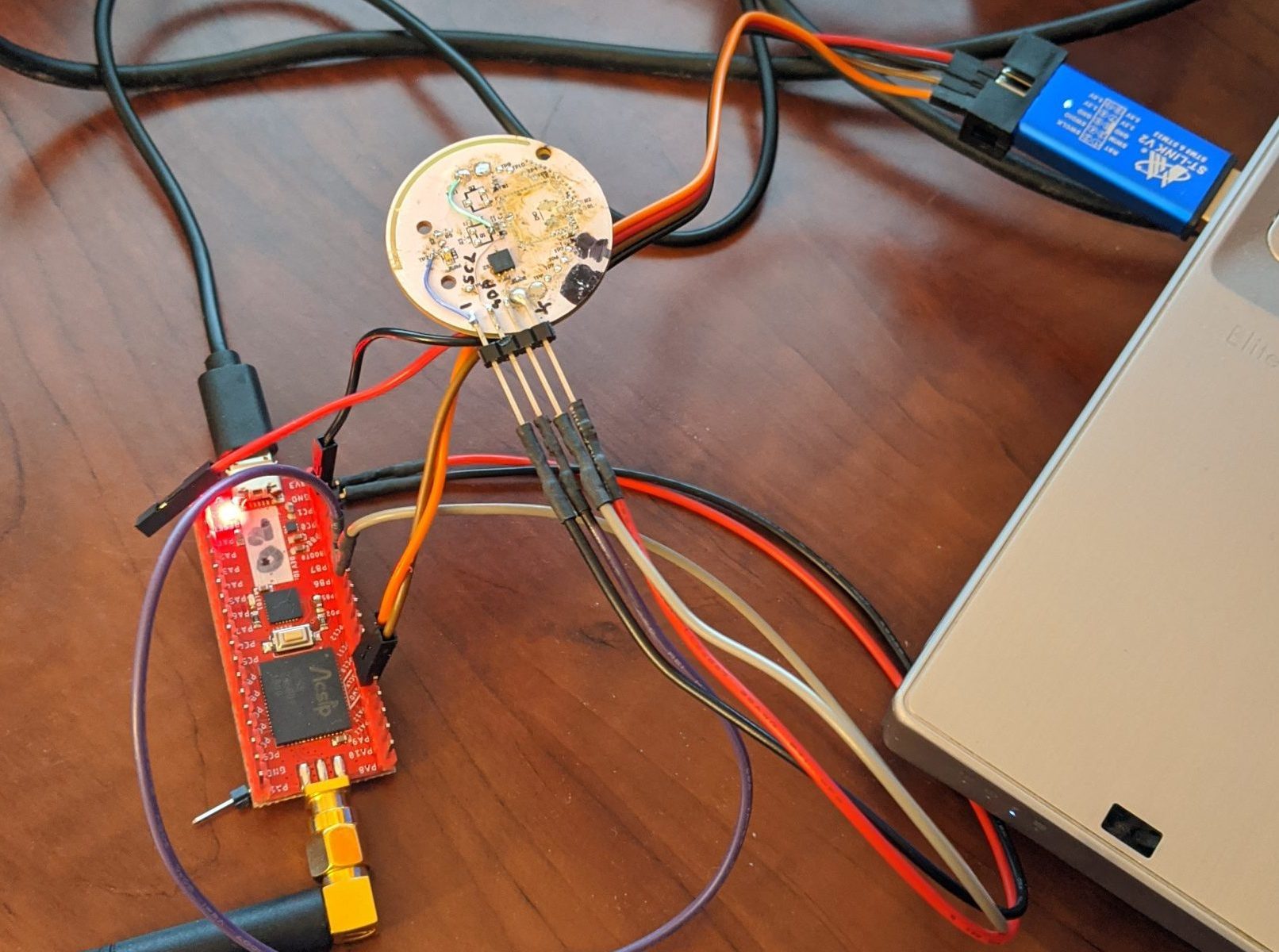Filipe and I have been looking into expanding and extending the Eye on the Ice(tm) system for Hans Wuthrich of Ice Consultants International. The original system was developed around 2008/2009 by my team at Norscan Instruments Ltd., back when we were diversifying our product offering. I was Product Development Manager with a fantastic group of very talented people working with me. They did a great job of the design of the Remote Measurement Module (RMM), the Collector Module (CM), and the MS-Windows software that went with it. It’s a great system!
Alas, RF modules eventually go obsolete, and the ones used in the Eye on the Ice system will likely soon be unavailable. They might be around for a few years, who knows, but the writing is on the wall – technology changes, RF emissions regulations tighten, and products change.
Last fall, and into the new year, Filipe and I did a proof-of-concept for an in-ice Eye on the Ice sensor which would use Silicon Labs Zen Gecko EFR32ZG14, the Zen Gecko. Although the system did work, we found that the low-level control of a mostly-asleep sensor was going to be a huge job. The examples given, and the information provided, just weren’t enough to get us over the challenge. In addition, the Z-Wave devices appear to “retry themselves to death” if the central station goes away – not a good thing for a low-cost, sealed temperature sensor device.
One thing that looks like an interesting alternative is the LoRa system – long range, low data rate, adaptable for different jurisdictions. Probably an excellent alternative for transmission of data like Eye on the Ice.
There are modules available to test – look at the Reyax RYLR896 LoRa Module at Amazon, a LoRa Hat for Raspbery Pi at Amazon, a LoRa USB stick at Amazon. There also seems to be a LoRa book, but it has bad reviews.
The Reyax web site has a few interesting LoRa modules. Their modules use “AT commands” to set centre frequency, spectral parameters, and data rate. With that in mind, these modules could almost be a drop-in replacement for the present Linx FHSS modules that Eye on the Ice uses!
The RYLR896 LoRa module from Amazon is documented here – along with specifications for the “AT commands”. The board-mount module that it’s based on is the RYLR890 which is documented here.
The MicroChip (formerly Atmel) LoRa offerings are also interesting. There is the R34, a low cost BGA SoC that has a 32 bit ARM plus a multi-band LoRa radio. It’s available on the cool DM320111, a US$99 reference design / development kit, also available from Amazon for the same price. One concern is that the documentation talks about the LoRaWAN protocol stack, which we’d want to turn off, so we can just talk simple serial from station to station.
Then I found the Hope RF series of LoRa modules, very interesting, especially the RFM95W. It looks like it’s just what we need. It does simpler modulation as well, just by flipping a bit in its configuration. You would lose all the error correction hyper sensitivity, and built-in spread spectrum, but it would be an easy way to establish simple communication. There seems to be plenty of documentation on the chip, the RF95. If you Google “HopeRF RF95”, you will find RFM95_96_97_98W.pdf on the SparkFun web page, which gives comprehensive documentation of the chip, its operation, and its registers. I suspect SparkFun stocks, them, and Digi-Key has them as well. There appears to be a nice Demonstration Kit, the RFDK_RFM95, but I can’t seem to find a vendor… GorillaBulderz in Australia lists them but has no inventory, and no indication of when it will be in stock.


